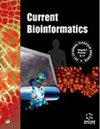Comparison between Ribosomal Assembly and Machine Learning Tools for Microbial Identification of Organisms with Different Characteristics
IF 2.9
3区 生物学
Q3 BIOCHEMICAL RESEARCH METHODS
引用次数: 0
Abstract
Background: Genome assembly tools are used to reconstruct genomic sequences from raw sequencing data, which are then used for identifying the organisms present in a metagenomic sample. Methodology: More recently, machine learning approaches have been applied to a variety of bioinformatics problems, and in this paper, we explore their use for organism identification. We start by evaluating several commonly used metagenomic assembly tools, including PhyloFlash, MEGAHIT, MetaSPAdes, Kraken2, Mothur, UniCycler, and PathRacer, and compare them against state-of-theart deep learning-based machine learning classification approaches represented by DNABERT and DeLUCS, in the context of two synthetic mock community datasets. Result: Our analysis focuses on determining whether ensembling metagenome assembly tools with machine learning tools have the potential to improve identification performance relative to using the tools individually. Conclusion: We find that this is indeed the case, and analyze the level of effectiveness of potential tool ensembling for organisms with different characteristics (based on factors such as repetitiveness, genome size, and GC content).比较核糖体组装和机器学习工具在微生物鉴定中的不同特性
背景:基因组组装工具用于从原始测序数据中重建基因组序列,然后用于识别元基因组样本中存在的生物。方法:最近,机器学习方法被应用于各种生物信息学问题,在本文中,我们探讨了机器学习方法在生物识别中的应用。我们首先评估了几种常用的元基因组组装工具,包括 PhyloFlash、MEGAHIT、MetaSPAdes、Kraken2、Mothur、UniCycler 和 PathRacer,并以两个合成模拟群落数据集为背景,将它们与以 DNABERT 和 DeLUCS 为代表的基于深度学习的先进机器学习分类方法进行比较。结果我们的分析重点是确定将元基因组组装工具与机器学习工具组装在一起是否有可能比单独使用这些工具提高识别性能。结论我们发现情况确实如此,并分析了针对具有不同特征(基于重复性、基因组大小和 GC 含量等因素)的生物的潜在工具组合的有效性水平。
本文章由计算机程序翻译,如有差异,请以英文原文为准。
求助全文
约1分钟内获得全文
求助全文
来源期刊

Current Bioinformatics
生物-生化研究方法
CiteScore
6.60
自引率
2.50%
发文量
77
审稿时长
>12 weeks
期刊介绍:
Current Bioinformatics aims to publish all the latest and outstanding developments in bioinformatics. Each issue contains a series of timely, in-depth/mini-reviews, research papers and guest edited thematic issues written by leaders in the field, covering a wide range of the integration of biology with computer and information science.
The journal focuses on advances in computational molecular/structural biology, encompassing areas such as computing in biomedicine and genomics, computational proteomics and systems biology, and metabolic pathway engineering. Developments in these fields have direct implications on key issues related to health care, medicine, genetic disorders, development of agricultural products, renewable energy, environmental protection, etc.
 求助内容:
求助内容: 应助结果提醒方式:
应助结果提醒方式:


